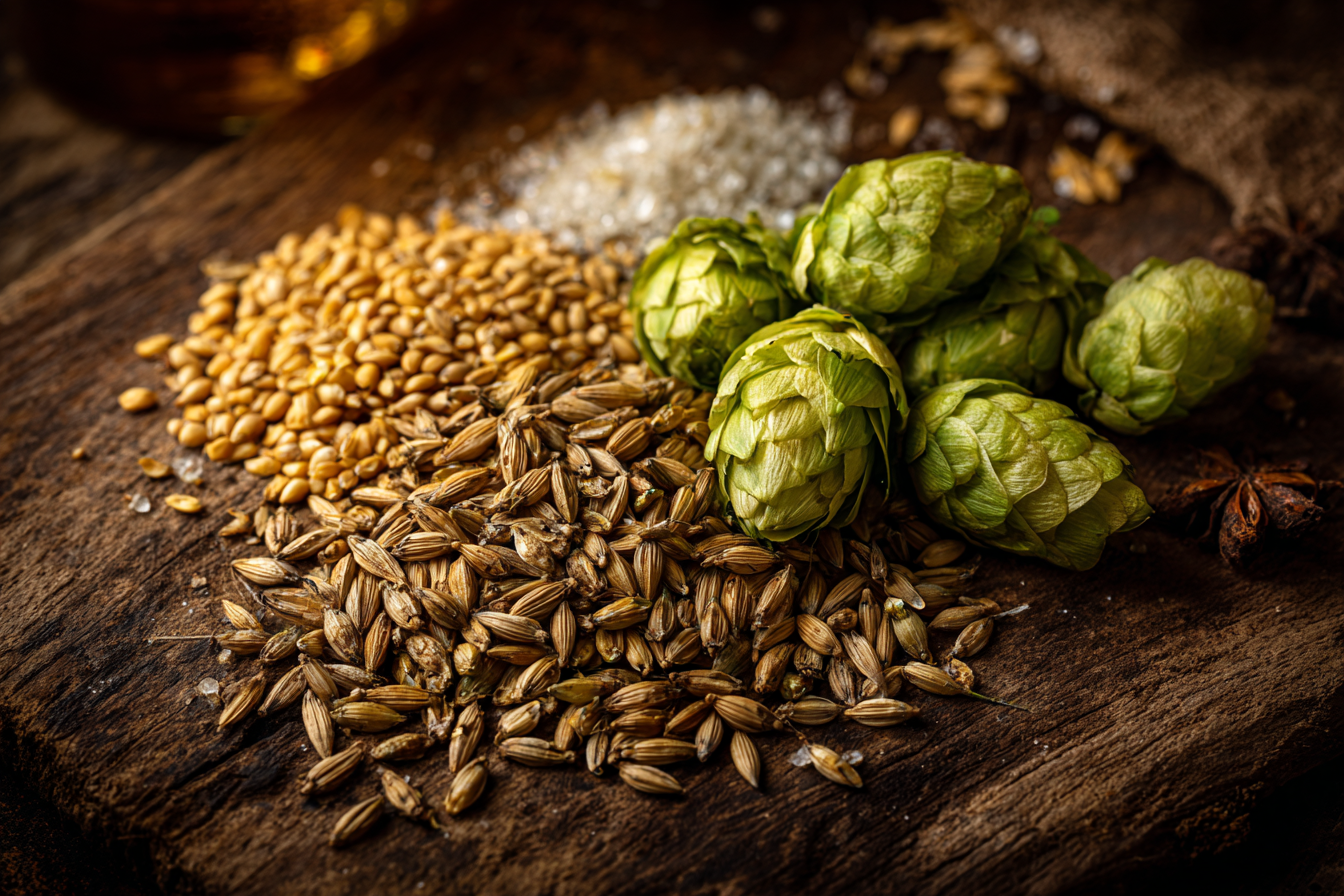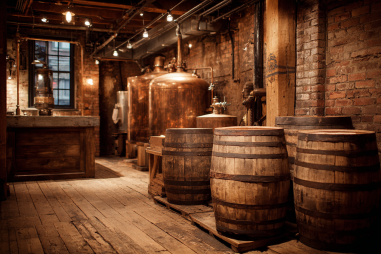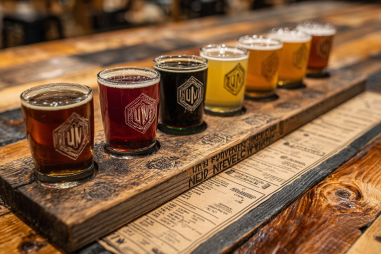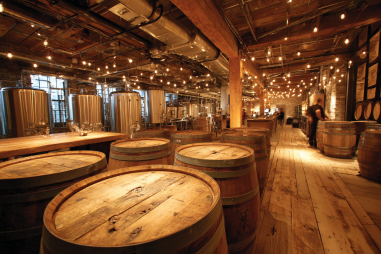When it comes to brewing an authentic Czech amber lager, the magic truly begins with the ingredients. Each component, from malt to water, contributes to the unique flavor, aroma, and appearance that beer enthusiasts around the world cherish. If you want to recreate that deep amber hue and deliciously balanced malt-forward profile at home or deepen your appreciation for the style, understanding the role of each ingredient is essential. Let’s explore the fundamental brewing elements that give Czech amber lagers their distinctive character.
Basics of the Czech Amber Lager Recipe
Czech amber lagers, sometimes referred to as “Czech-medium” or “amber pilsners,” sit beautifully between the pale pilsners and the darker, richer bocks. They offer a harmonious balance of malt sweetness with moderate hop bitterness, creating a smooth, approachable beer with complex flavors. The base of this style lies in meticulous ingredient selection and adherence to traditional techniques dating back centuries in the Bohemian region.
Understanding the foundational ingredients help brewers respect the heritage and craft a beer that honors the original style while allowing for slight creativity.
Malt Varieties: Providing Flavor and Color Depth
The backbone of any Czech amber lager is the malt bill. Unlike lighter Czech lagers which rely heavily on pale malts, amber lagers incorporate specialty malts to add richness and depth.
- Pilsner Malt: This is the primary malt used, providing a clean, sweet, and slightly bready foundation. It contributes to the beer’s fermentable sugars and leaves room for other malts to shine.
- Caramel and Vienna Malts: These malts bring caramelized sweetness, nutty undertones, and a warm amber color. Vienna malt, in particular, adds a toasty, slightly biscuity note that complements the malt profile beautifully.
- Specialty Malts: Depending on the recipe, small amounts of Munich malt, Melanoidin malt, or darker caramel malts might be used to add complexity, deepen color, and improve mouthfeel.
The careful balancing of these malts imparts not only the amber tint but also the signature malt-forward character of the style. The sweetness should be noticeable but never overpowering, with a smooth finish that invites another sip.
Hop Types and Their Aromatic Contributions
Czech hops are world-renowned, and for good reason. When brewing a Czech amber lager, hop selection plays a pivotal role in maintaining authenticity.
- Saaz Hops: The quintessential Czech hop, Saaz lends a gentle yet distinct earthiness, mild herbal notes, and a subtle floral aroma. It’s prized for low alpha acids, which mean it provides moderate bitterness without overwhelming the malt.
- Other Noble Hops: While Saaz dominates, sometimes brewers might blend in additions of similar noble hops like Hallertau or Tettnang to slightly alter the aroma complexity but always with mild and clean bitterness.
Traditional Czech lagers are known for maintaining a delicate hop profile. The hop bitterness balances the sweet maltiness without sharpness, and the aroma tends to be soft and inviting, rather than assertively bitter or citrus-forward as seen in some other lager styles.
Yeast Strains Unique to Czech Brewing
The yeast used in Czech amber lagers is vital for defining its flavor profile. The lager yeast strains employed are bottom-fermenting Saccharomyces pastorianus, but with distinct regional characteristics.
Czech yeast strains tend to produce clean fermentation notes with subtle fruity esters that enhance the malt and hop interplay without overshadowing them. The fermentation temperature is typically cooler, around 8-12°C (46-54°F), contributing to the clean, crisp finish Czech lagers are famous for.
Many brewers rely on preserved yeast strains that trace back to original Czech breweries, ensuring authenticity in both flavor and fermentation behavior. This yeast provides a subtle backdrop that allows malt complexity and hop aroma to shine.
Water Chemistry and Its Role in Lager Production
Water is often the unsung hero in brewing, and in Czech lagers, it has a distinctive chemical profile that shouldn’t be overlooked.
- Soft to Moderately Hard Water: Regions like Pilsen, famous for Pilsner lagers, have very soft water. However, areas producing amber lagers, like České Budějovice, typically have moderately hard water with balanced mineral content.
- Mineral Content: Key minerals like calcium, magnesium, sulfate, and bicarbonate influence the mash chemistry as well as flavor perception in the finished beer. For amber lagers, a balanced sulfate-to-chloride ratio helps moderate bitterness and malt sweetness, creating a smooth mouthfeel.
- Water Adjustments: Brewers striving for accuracy may adjust their water profiles by adding brewing salts such as gypsum or calcium chloride to replicate the Czech water’s buffering capacity and mineral balance.
Proper water chemistry ensures the mash enzymes function optimally, the hops express their character fully, and the yeast performs efficiently, all contributing to a well-rounded lager.
Impact of Ingredient Selection on Final Beer Quality
The synergy between malt, hops, yeast, and water defines the final quality of a Czech amber lager. Minor adjustments in any ingredient can significantly affect flavor, aroma, color, and mouthfeel.
Malt impact: Too many specialty malts may make the beer overly sweet or heavy, while too few can create a thin, pale outcome lacking complexity.
Hop balance: If hops are too assertive, the beer loses its traditional gentle bitterness; too mild and the finish will be cloying or flat.
Yeast fermentation: Off-flavors or esters can derail the clean profile, highlighting the importance of yeast management and strain selection.
Water profile: Incorrect water chemistry can lead to harsh bitterness, dull malt character, or poor yeast health.
Brewing an authentic Czech amber lager demands attention to each of these factors to produce the desired smooth, malt-forward character with subtle hop presence and a deep amber color.
Choosing and Sourcing Quality Ingredients for Success
For brewers wanting to create an authentic Czech amber lager, sourcing the right ingredients is half the battle won.
- Malt: Seek out European base malts such as Bohemian Pilsner malt and specialty malts sourced from reputable European maltsters that replicate traditional profiles.
- Hops: If possible, use genuine Czech Saaz hops or trusted substitutes that mimic its delicate aroma.
- Yeast: Acquire a yeast strain known for Czech lager brewing characteristics, available through specialty yeast suppliers.
- Water: Test your water and adjust accordingly to emulate the balanced mineral content that aids traditional lagering.
Patience and precision in ingredient selection and brewing practice will yield a Czech amber lager that is rich in history, flavor, and an absolute pleasure to enjoy.
By embracing the cornerstone elements — malt, hops, yeast, and water — you can capture the true essence of Czech amber lager brewing. It’s a rewarding journey that not only enhances your brewing skill but also deepens your appreciation for one of the world’s most beloved beer styles.







